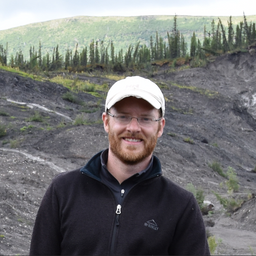Remote sensing of permafrost thaw landslides in the Northwest Territories – from Field to Cloud to Field again with Jurjen van der Sluijs, Unmanned Aircraft Systems Coordinator with NWT Centre for Geomatics

My Session Status
The landscapes in the Northwest Territories (NWT, Canada) are amongst the most rapidly changing in the world due to climate-induced permafrost thaw. This presentation provides an overview of recent remote sensing and mapping investigations of permafrost thaw landslides across different spatial and temporal scales in the NWT. A common thread of ever-expanding geospatial capabilities (remote sensing, machine learning) is juxtaposed against rapidly intensifying permafrost thaw with many growing information gaps by communities and governments alike. There is urgent need to improve information on permafrost thaw extent and frequency, types and diversity of thaw, as well as implications to our infrastructure, ecological and cultural environments.
At the field-scale we show examples of how drone technologies have enabled seasonal and annual topographic surveys of permafrost landslides, providing new insights into how these landslides evolve over time and informing the design and implementation of site-specific infrastructure monitoring systems. In Canada drone systems currently operate at a small geographic extent due to endurance and aviation regulatory limitations, yet especially in remote areas such as in the NWT there is a need to survey much larger areas at the regional scale (e.g., LiDAR). Long-endurance drones carrying out beyond-visual-line-of-sight (BVLOS) missions were tested along two Arctic highways to test the performance of photogrammetric data acquisition and show emerging permafrost thaw monitoring applications.
At the landscape scale satellite remote sensing and cloud computing are promising technologies for monitoring landscape changes in remote, northern environments, yet these changes require expert validation and interpretation. A recent trend analysis of Landsat satellite image stacks in the NWT has highlighted a diversity of thaw-driven landscape disturbances. A systematic aerial inventory of permafrost terrain across >26,000 km of helicopter flightlines was implemented, leveraging a digital survey application (ArcGIS Survey 123©) and georeferenced photos, to help interpret the Landsat trend analysis outputs. Collectively the data analyses can be used through a structured, iterative process whereby field observations support regional and landscape-level satellite work, and vice versa, to achieve broader goals of understanding the nature and implications of permafrost thaw in the NWT.
